TOMATOES & CORN, TWO ALL-AMERICANS
Ode to Sungold
As the curtain closes on the summer garden and the autumn garden edges towards its glory, I’d like to offer thanks. No, not a religious thanks for a summer of tomatoes, peppers, cucumbers, okra, and other warm weather vegetables. But thanks to a person, the person who bred Sungold cherry tomato.
Anyone not familiar with Sungold tomato should be. It’s sweet and tangy, not at all cloying, enveloped in persimmon-orange skin. I once grew over 20 varieties of cherry tomatoes (Solanum lycopersicum var. cerasiforme), including Sungold, for a magazine article. As a friend walked down the row, sampling fruit from each plant, she proclaimed, “That’s one row of lousy tomatoes.”
Agreed, excepting a few varieties, one of which was, of course, Sungold. The other exceptions were Gardener’s Delight, Sweet Million, and Suncherry, all three of which are rarely seen these days, probably because Sungold eclipsed the others with its distinctive appearance and, I think, even better flavor.
(My cherry tomato row didn’t include marble-size, so-called currant tomatoes, botanically, S. pimpinellifolium. They are very sweet, very small, and very tasty. I don’t grow them anymore because, for me, they’re too messy, dropping fruits all over the place. The following year, seedlings can grow to become a tomato jungle.)
So who was it that gave us Sungold? The only information I could sleuth out was that Sungold was developed in the 1990s by Japan’s Tokita Seed Company. Sungold was introduced to American and British gardens in 1992, soon became very popular, and has remained popular ever since.
With all that beauty and flavor, Sungold is not hard to grow. It starts bearing relatively early each season and remains healthy, bearing heavily all season long, well into fall weather. If Sungold has one fault, that would be it’s thin skin that’s very prone to cracking. Since growing my row of lousy cherry tomatoes, I have heard good things about the varieties Golden Sweet, Sunsugar, Sunpeach, and Isis Candy. Mostly, they are touted as having very good flavor and thicker skins, less apt to crack following a downpour.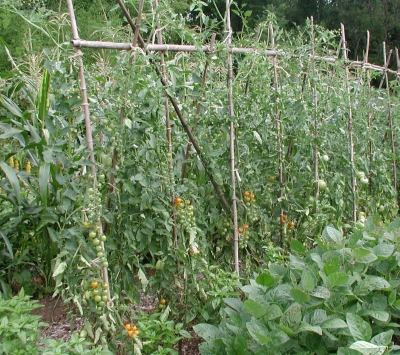
For me, a more major limitation of Sungold is that it’s not an heirloom. It’s an F1 hybrid variety, which means I can’t save seed myself for next year’s plants. Not if I want Sungold, that is, as opposed to a tomato that hints of Sungold but isn’t the real thing. Ever since Sungold was introduced, gardeners have been trying to develop an open-pollinated twin, that is, one that would be “true” from seed. So I still buy and plant Sungold seed each year. I might try Isis Candy, which can come true from seed.
The Joy of Seed Saving
Too bad about Sungold because saving vegetable and flower seeds provides such primal satisfaction, guarantees that you can grow a favorite variety even if it’s no longer offered for sale, and saves some money. Every year I save seeds from such vegetables as Shirofuma edamame, Sweet Italia pepper, Picnic Orange pepper, and Ventura celery.
Especially satisfying are the popcorn and polenta seeds I’ve saved over the years. Corn, after all, is a staple, a grain that we can each easily grow in our own backyards. It’s more suited to backyard production than other grains because its grains (kernels) remain attached in profusion in a neat, husk-wrapped cylinder.
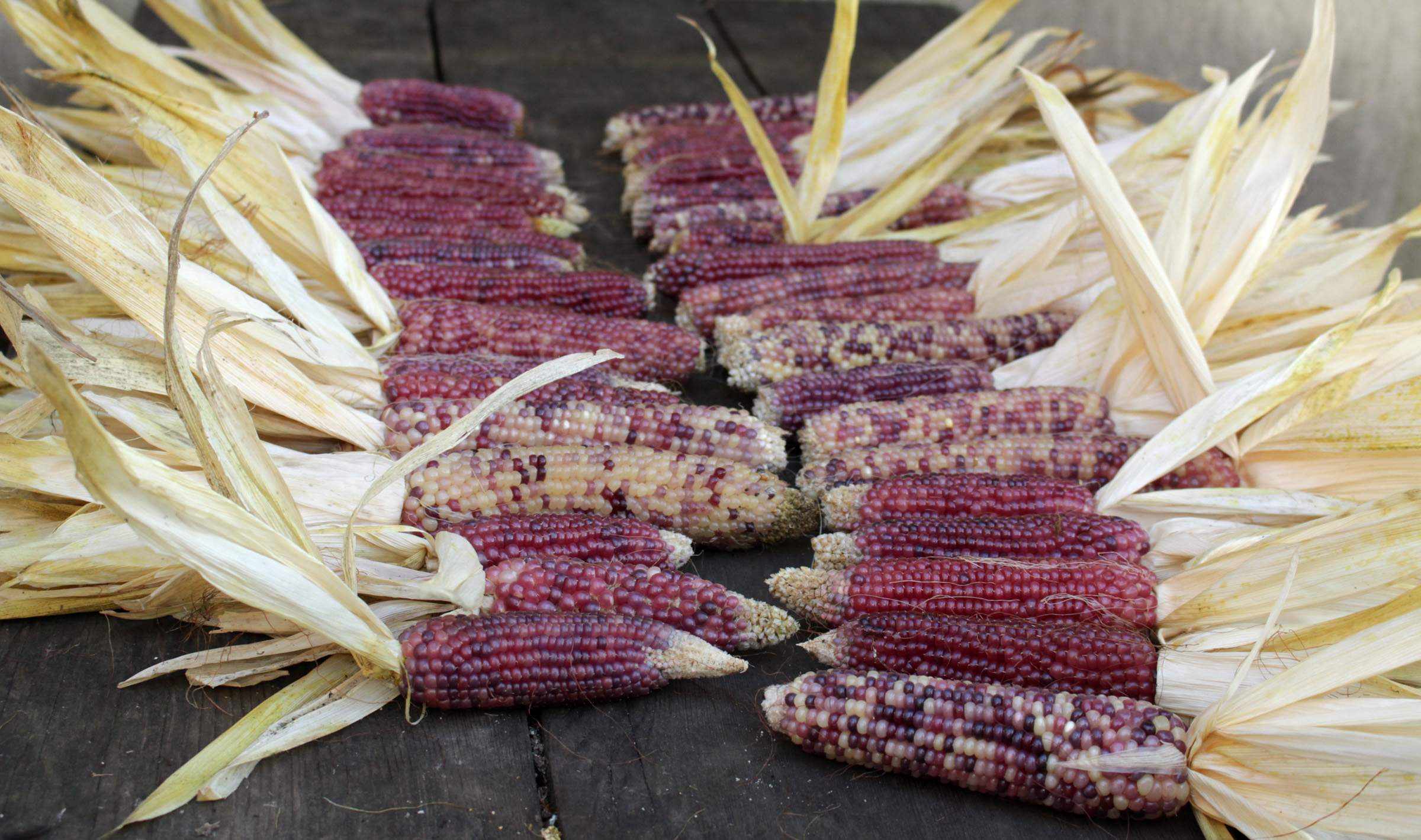
That’s perfect for making the grain easy to gather at the end of the season, although not so good for a wild grain because the seeds are poorly dispersed. Corn’s ancestor, teosinte, which originated in Mexico, was a better wild plant for dispersal, with each primitive ear hosting just a few kernels that had plenty of elbow room to grow once they dropped to the ground and sprouted.
Last week we harvested one bed each of Dutch Butter popcorn and Pink Pearl popcorn.
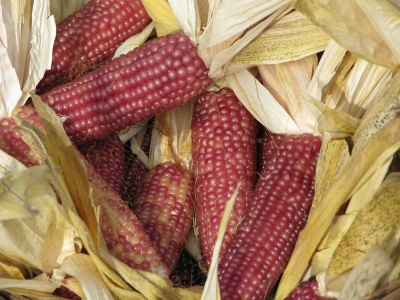
Popcorn, Pink pearl
These two varieties, in my opinion, taste better than commercial varieties I’ve tasted even if they don’t puff up as large when popped. The white or pink ears also look very pretty hanging all winter from a rafter in the kitchen.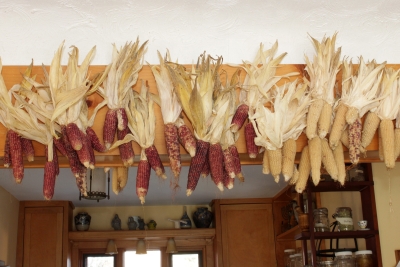
I started growing and saving polenta corn seeds a few years ago after being given a couple of mature ears of Otto File, an heirloom Italian variety whose name translates to “eight row,” which it has. The kernels have an orange tinge and, once ground — especially if ground fresh — cook up into a delectable polenta of distinctive flavor. This variety was almost lost, and I was given it as part of an effort to maintain it.
The one problem with growing popcorn and polenta corn is that each kind and variety has to be sufficiently isolated so that no cross-pollination occurs. So I planted sweet corn in my north vegetable garden, and clumps of Otto File in the south field between the dwarf apple trees.
The two popcorn varieties go into the south vegetable garden. Evidently, they weren’t sufficiently isolated from each other because Dutch Butter sometimes has some pink kernels and Pink Pearl sometimes has some white kernels. Even the mutts — Pink Dutch Pearl Butter? — taste very good.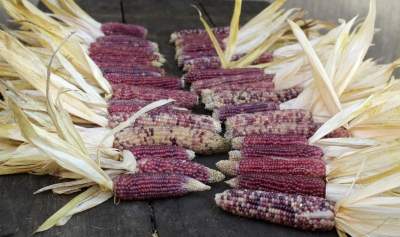

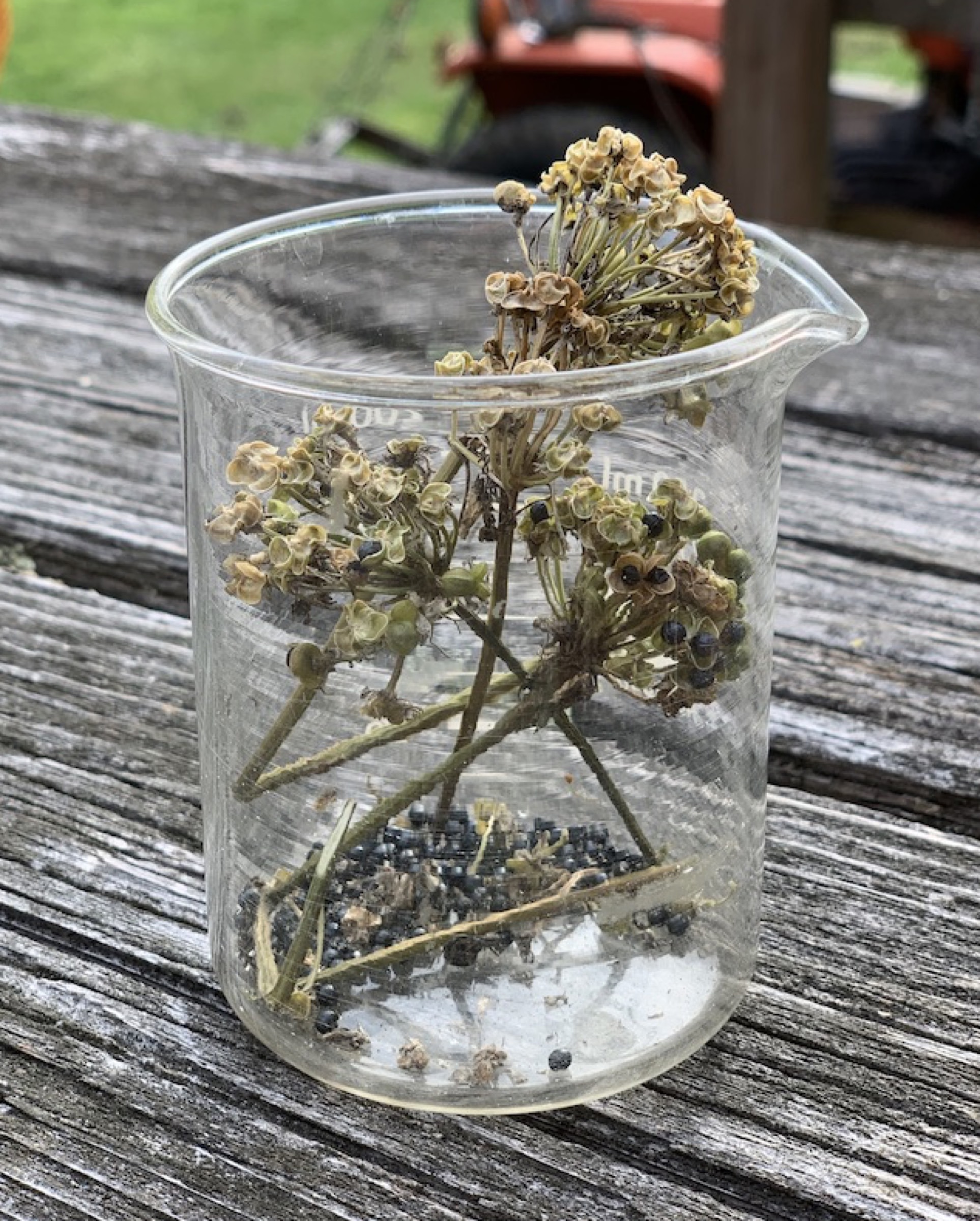

Try saving and growing out Sungold seeds. I have found they, and other hybrids, do usually come true from seed. The marking of hybrids as such is a convention in the seed industry but any of these varieties is typically a stable variety by the time its seed gets into millions of tiny packets. I don’t think anyone goes around with a tiny paintbrush and micro shears creating the hybrid (and it is unlikely you would end up with the same hybrid simply by making the same cross) year after year to meet the seed demand. Try – you may end up with Sungold, or something even more interesting.
I’ve tried, and the plants bore inferior fruit. Perhaps I’ll take another stab at it.
I agree that Sungold is great. I usually grow several varieties of slicers each year and sungold, and sungold is still really the only one that I love eating without having to add olive oil or salt or anything. I think I’ll trim down the plantings next year… just sungold and paste tomatoes for salsa and cooking.